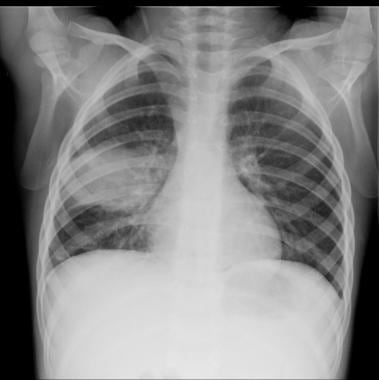

Read it at Google Books - Find it at Amazon Harcourt Publishers Group (Australia) Pty.Ltd. The Community-Based Pneumonia Incidence Study Group. Results of a population-based active surveillance Study in Ohio. Incidence of community-acquired pneumonia requiring hospitalization. The distribution is often bilateral and asymmetric and predominantly involves the lung bases 8. This represents areas of the lung where there are patches of inflammation separated by normal lung parenchyma. Read it at Google Books - Find it at Amazon Bronchopneumonia is characterised by multiple small nodular or reticulonodular opacities which tend to be patchy and/or confluent. Multiple foci of opacity can be seen in a lobular pattern, centred at centrilobular bronchioles. This may result in a tree-in-bud appearance. These foci of consolidation can overlap to create a larger heterogeneous confluent area of consolidation or 'patchwork quilt' appearance 6. Radiographic features Plain radiographīronchopneumonia is characterised by multiple small nodular or reticulonodular opacities which tend to be patchy and/or confluent. These areas of inflammation are separated by areas of normal lung parenchyma 3. Extensive congestion and dilation of blood vessels and areas of poorly circumscribed consolidation can be seen in affected areas 8. Histologically, multiple small foci of inflammation can be demonstrated. Pseudomonas aeruginosa: Pseudomonas aeruginosa pneumonia.Haemophilus influenzae: pulmonary Haemophilus influenzae infection.Klebsiella pneumoniae: Klebsiella pneumonia.

The radiological appearance of bronchopneumonia is not specific to any single causative organism, although there are organisms which classically have a radiological presentation of bronchopneumonia and hence the identification of bronchopneumonia can provide information regarding the likely aetiological pathogens 7. Causative organisms of a bronchopneumonia pattern include 3: This results in peribronchiolar inflammation, which can spread through the pores of Kohn to create consolidation throughout an entire secondary pulmonary lobule 2. Pathologyīronchopneumonia is precipitated by inhalation (or rarely haematogenous spread) of a causative organism. Bronchopneumonia may present with a productive cough, dyspnoea, pyrexia/fevers, rigors, malaise, pleuritic pain and occasionally haemoptysis 5. The presentation of bronchopneumonia depends on the severity of the disease, host factors and the presence of complications. Bronchopneumonia is a common hospital-acquired infection 3.

Incidence is higher at the extremes of age. Pneumonia is the most common cause of death due to infectious diseases in the United States, with an incidence of 11.6/1000 persons/year reported in one study 4. The spectrum of organisms known to cause respiratory infections is broad and constantly increasing as new pathogens are identified, and an increasing number of patients have impaired immunity due to disease or medications.


 0 kommentar(er)
0 kommentar(er)
